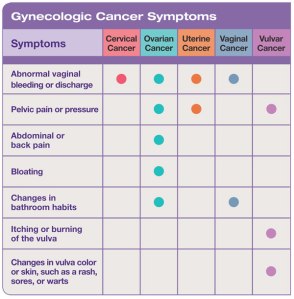
The White House lit up pink for Breast Cancer Awareness Month
While waiting for an appointment at the doctor’s office last week, I picked up a copy of the October issue of Harper’s Bazaar. As I flipped through the pages upon pages of ads, articles, and fashion spreads, I noticed one overriding theme—pink. On one page, an ad for the Breast Cancer Research Fund featuring a hip cartoon woman with colorful hair and sassy pink lips; on another, an editor-recommended pink lip-gloss with the proceeds going to breast cancer research; I flipped to a third page to find an ad for a limited-edition mascara with a pink ribbon printed down the side of the tube.
On another occasion, I might have completely overlooked this excess of pink ribbon advertising. But as it happens, I had already been thinking a lot about breast cancer in the previous days. I was particularly affected by a striking set of photographs by Angelo Merendino documenting his late wife and her journey through breast cancer. All the love, the pain—the rawness of living and dying and losing—was so very real in those photos. They seemed to inhabit a different world from the cheerful pink advertisements that cluttered the magazine in the doctor’s office.
I recently watched a documentary recommended to me by another RLA member—Pink Ribbons, Inc. The film explores the phenomenon of the pink ribbon and how breast cancer awareness and fundraising came to become a culture unto itself. Central to the story are Susan G. Komen for a Cure and the Avon Foundation, two large non-profit foundations that routinely host walks and runs in support of breast cancer research. These events have been inundated with corporate sponsors who pledge to donate a small portion of their proceeds to breast cancer research—provided, of course, that you continue to buy their products. Everything, it turns out, sells better in pink.
The great hypocrisy of these corporations is that they purport to be raising money for a cure while simultaneously using ingredients in their products that can serve as risk factors for the disease. A crucial theme throughout the entire movie was turning a critical eye toward fundraising efforts. As the film points out, cancer fundraising is the only movement where number of dollars raised seems to supersede where those dollars are actually going. In 2011, only 15% of Susan G. Komen’s donations went to fund research grants. And for the grants the foundation does fund, it is surprisingly difficult to find details about what type of research is being conducted, by whom, and to what end. Much of the breast cancer awareness movement focuses on early detection and treatment, while a shockingly small amount of resources are allocated to prevention and research exploring the root causes of the disease.
The film also raised a number of other points that could serve as entire topics unto themselves. For example, breast cancer has only become relevant to wider society because white, middle class women have become the face of the disease, even though black women have a higher mortality rate. The intense focus on breast cancer has also been used to water down feminism and divert attention from other more “controversial” women’s health issues, such as access to contraceptives and abortions.
Additionally, the choice of the color pink itself negates the lived experiences of women with breast cancer. Cancer is scary, unexpected, malicious, invasive; pink is warm, innocent, soft, and safe. And that is exactly the point. Corporations use pink to capitalize on this idea of hope and sisterhood, and to make people forget, if only temporarily, the painful realities of terminal illness. In an especially poignant interview with a support group for Stage IV breast cancer patients, a woman talked about how the rhetoric around breast cancer fundraising culture isolates those women who are in the end stages of the disease. Talk of “survivors” and the “fight” against cancer inherently suggests that those who succumb to their disease—those who “lose their battle”—have failed in a way that survivors have not.
As I watched Pink Ribbons, Inc., I felt a number of complex emotions: empathy for the women grappling with this illness, intense anger at the corporations that capitalize on their pain, and frustration that the pink ribbon movement has strayed so far from its original goals. Mixed in with all of these other feelings, I was also surprised by my own sense of accountability and even shame for the ways in which I have personally contributed to this culture. In high school, I was an active participant in a similar cancer fundraising event, Relay for Life. My freshman year of college, I served on the steering committee of my school’s Relay. I, too, have raised money for “cancer research” without paying close enough attention to what happens to those funds. I, too, have bought into these messages of hope and blind optimism.
Because let’s face it—in the face of so much pain and senseless loss, there is a need for that kind of assurance and connection. Movements don’t come from nowhere. They are built on us—on our personal experiences, our needs, and our hopes and desires. It’s no wonder so many people get caught up in the breast cancer awareness mania. They need something to put their faith in.
So where do we go from here? How do we balance out this need for shared support with the necessity of a sustainable movement that actually meets the health needs of women rather than further exploiting us? Well, we can start simply by educating ourselves. Pink Ribbons, Inc. is a great start, but there are many other resources to go to for more information and to support such as the Think Before You Pink campaign and the Breast Cancer Fund’s Beyond the Pink project. Next, we can hold corporations accountable for the health safety of products they create by pushing legislation such as Chemical Safety Improvement Act and by only buying products that are toxin-free. Lastly, we can work to create supportive spaces and movements that serve as alternatives to corporate-sponsored runs and walks, and that are inclusive of all women’s voices—including Stage IV patients and their families. It’s time women pushed beyond breast cancer “awareness” and into breast cancer action.





